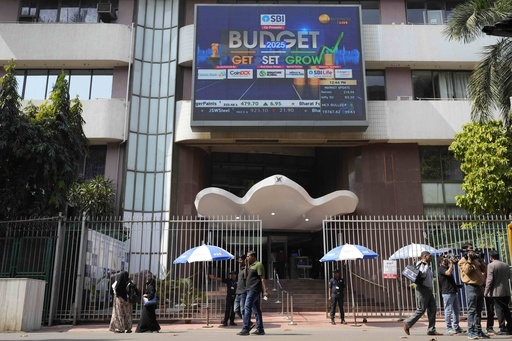
NEW DELHI — On Saturday, the Indian government led by Prime Minister Narendra Modi showcased its annual budget to Parliament, placing a strong emphasis on appealing to the salaried middle class through tax reductions and promoting economic expansion by enhancing sectors like agriculture and manufacturing.
During her presentation, Finance Minister Nirmala Sitharaman articulated the government’s commitment to escalate private investments aimed at fortifying growth, boosting funding for agriculture, and increasing the disposable income of India’s middle class.
“The budget’s priority is to ensure that everyone progresses together on an inclusive pathway,” Sitharaman stated, expressing the intention of achieving a fiscal deficit of 4.4% of India’s gross domestic product by the 2025-26 financial year.
Despite being the world’s fifth-largest economy, India is projected to experience its slowest growth in the last four years. Contributing factors include a sluggish manufacturing sector, ongoing food inflation, stagnant job creation, and a decline in urban consumption. According to the chief economic advisor’s report released prior to the budget, India’s economy is expected to grow between 6.3% to 6.8% in the forthcoming fiscal year.
Key highlights from the budget include:
**Tax Reductions for the Middle-Class**
Sitharaman announced that her government will implement reforms across various sectors including finance, power, urban development, and mining, emphasizing transformative changes in tax policies. The income tax threshold will be raised to approximately $14,800 from the previous level of $8,074, with a new income tax bill to be introduced shortly.
“This new structure will significantly lower the tax burden on the middle class, allowing them to retain more income, which in turn will encourage household consumption, savings, and investments,” Sitharaman explained.
Modi, now serving his third term, is facing pressure to address dissatisfaction among the middle class and to create additional jobs to sustain economic growth. Numerous economists have urged the government to implement individual tax cuts and develop job generation initiatives to combat rising unemployment.
As reported by the Center for Monitoring the Indian Economy, youth unemployment stood at 7.5% in January, highlighting the difficulties in generating employment opportunities within a nation of over 1.4 billion people.
**Enhancements for Agriculture and the Gig Economy**
To uplift productivity in agriculture, the Indian government plans to initiate a nationwide campaign aimed at promoting high-yield crop cultivation, specifically pulses and cotton. Sitharaman specified that this program would target around 17 million farmers and will increase the cap on subsidized credit offered to them from $3,460 to $5,767.
Additionally, there are plans to formally recognize gig workers in India, facilitating their access to healthcare services. The government intends to issue identity cards for gig workers and establish a national registry to ensure their participation in various welfare programs.
Estimates from the government think tank NITI Aayog suggest that India’s gig economy could potentially create employment opportunities for over 23 million individuals by the year 2030.
**Investment in Startups and Energy Initiatives**
Sitharaman also introduced a new funding initiative dedicated to startups, highlighting the government’s aim to increase financial support for innovation in collaboration with the private sector. Furthermore, she announced programs targeted at enhancing manufacturing and export activities, noting that the manufacturing sector currently contributes approximately 17% to India’s economy, which is below the targeted objective of 25%.
Moreover, she confirmed the allocation of additional funding to promote tourism-related employment in various states and to improve infrastructure, including air connectivity to 120 new destinations over the next decade. Additionally, the Nuclear Energy Mission was unveiled, which aims to facilitate India’s transition toward clean energy, with a target of achieving at least 100 GW of nuclear power by 2047.

